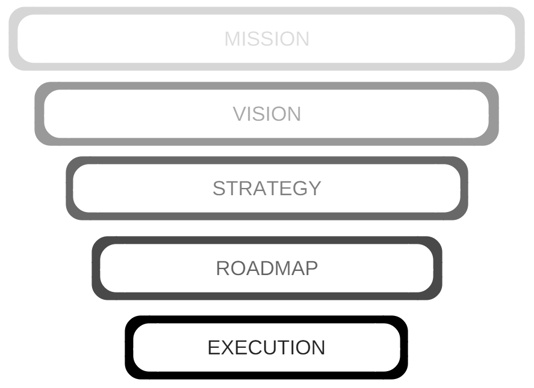
Across industries, there's one skill that separates you from the rest of the pack, and helps you to soar through the ranks.
This is the skill that differentiates the business leaders from the rest of the team, the ones who get the promotion from the ones who don't.
The skill? Strategic thinking.
Strategic thinking is one of the greatest mental shifts a person can undergo in their career. Beyond providing significant value to the individual, this skill also contributes to the success of the team and business one work with.
As promising this sounds, given its abstract nature, strategic thinking is a skill that is difficult to teach. So, we want to share with you a framework we have discovered that does a brilliant job of decoding strategic thinking.
The Strategic Thinking Framework
Quality strategic thinking doesn't exist on its own, it forms part of a larger process. To achieve strategic thinking, you would typically start from the end objective, and work your way backwards to where you are now. This process can be broken down to a framework which includes 5 key parts: mission, vision, strategy, roadmap and execution.

1. Mission
First, at the highest level of thinking, there is the mission. The mission is an overarching statement of the problem you are setting out to solve, or goal you are working to achieve.
2. Vision
The vision is how you imagine the solution to the problem, or achieving the goal to look like. This component typically only gives enough detail to conceptualize a viable solution, without the finer details that dampen imagination.
3. Strategy
Thirdly, you need to implement a strategy to pave the way. The strategy is the combination of principles and decisions, that is based on reality but anchored with assumptions which you commit to before you start taking action towards realizing your objective.
4. Roadmap
Next in the process is road mapping. A roadmap outlines the steps you intend to take in order to solve your problem, or achieve your goal, in detail. These steps include predicted timelines and milestones.
5. Execution
Lastly, there is the execution. The execution entails the day-to day activities done while following the roadmap. This is the bit where the hard work happens, and information is collected to make informed decisions that will dictate any necessary changes to your roadmap, and/or strategy to achieve the mission.
As you progress down the ladder to the finer components, the details go from being vague and broad overarching ideas, to narrow and concrete steps. The role of strategizing is to form the bridge between what you aspire to achieve, and what you plan to do to achieve the aspiration.
Apply the framework
To clarify this process, we have come up with an analogy: Imagine you are a marketer and have been asked to create a strategy for a new campaign.
- In this scenario, the mission is to release a marketing campaign that converts potential clients. In this situation, there are many different 'solutions', or ways this can be achieved.
- The vision decided is to create a social media marketing campaign that releases fresh advertising content each month to move potential clients through the buyer’s journey. But how will you decide the content that should be used to support this campaign?
- Here is where the strategy comes in. In this case, the strategy is to lay out the goals for each month. It is decided to focus on LinkedIn advertising and to use a mix of offer promotions and client testimonials to plan engaging advertising content that generates the interest needed while keeping the resources need to curate the content to a minimum.
- From the strategy, we are able to determine the road map that aims to satisfy the desires and restrictions outlined in the strategy.
- And then lastly comes the execution, which is when you carry out what you have mapped out earlier.
It is important to note that the more specific details you have set in concrete (in your roadmap), the more likely it is that you will have to adjust your plan, as things often don't go as planned. This is to be expected, and is not necessarily a sign of bad road mapping.
At the end of the day, you don't need a strategy to get stuck in, however, without one you will spend more time working around obstacles, as well as potentially backtracking and having to make big decisions under time constraints.
This is coupled with the potential to have disagreements with your fellow team members. These all create unnecessary friction in the process, adding time and resource costs which could have been avoided with initial strategic thinking.
And there you have it! A framework you can apply to your work to help you think strategically, and take your career to the next level.
Already in leadership and looking to recruit a new team member? Download your free copy of our guide, Hiring Done Right, to learn how to hire like a seasoned pro!



